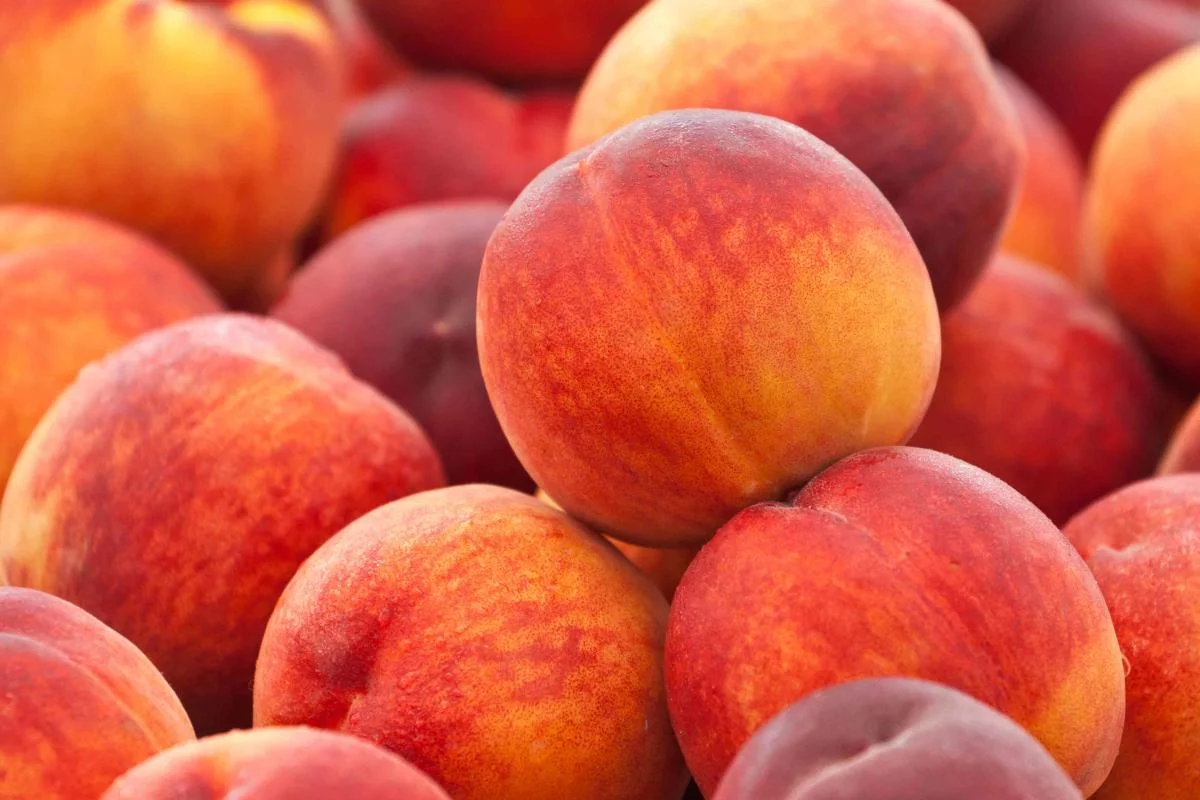
Peaches grown in the country’s orchards flowed onto external markets in very large quantity during the first half of this season. According to official calculations, a total of 32,937 tons of fruit were shipped to foreign buyers in January–June. Their total value is estimated at about 31.4 million US dollars. These figures are given in the information of the National Statistics Committee.
Notably, the half‑year export volume increased by 17.6 thousand tons compared with the same period last year. In other words, relative to last year’s growth base, peaches sent out of the country rose 2.2 times. It is noted that coordinated work among growers, refrigerated logistics chains and selling companies has been one of the main drivers of this sharp growth.
In the current season one of the primary directions remains Russia: 24,752 tons were delivered there. In second place is neighboring Kazakhstan — 6,387 tons. Next comes Kyrgyzstan, recorded at 1,531 tons. Buyers in Belarus purchased 210 tons of fruit. The share of other countries is much smaller — a total of about 57 tons.
Based on the total value, a roughly calculated average export price comes out a bit above 950 dollars per ton. Naturally, prices vary by destination, quality grade, trading terms and logistics costs; the figure here is an arithmetic mean (official contract details have not been published).
Experts emphasize that, in exporting, such factors as the expansion of the refrigerated container fleet, automation of sanitary and phytosanitary checks at the border, and the digitization of certification procedures have played a major role. In recent years many exporters have begun using comfortable logistics corridors set up for small‑volume lots; this made it possible to deliver even the early crop at the start of the season quickly. (Commentary based on expert opinion; the data are not fully official.)
The peach harvest is strongly tied year‑to‑year to climate fluctuations. The degree of winter cold, winds during spring flowering, and heat waves at the start of summer determine crop quality. It is reported that this year seedlings in many regions were preserved fairly well and additional measures on water supply were carried out. For that reason the selection base for export expanded.
Competition in the external market is high: fruit‑and‑vegetable suppliers from the South Caucasus, other parts of Central Asia, as well as producers within the European Union, change prices quickly depending on the season. To retain the buyer, the fruit’s external appearance, texture and transportability are decisive. It is said that in recent years exporters have updated sorting lines and moved to forming standardized lots by fruit size and shape.
Concentration in export geography is also noteworthy: nearly two‑thirds of the total volume falls to a single market — Russia. This brings the issue of diversification onto the agenda in order to ensure the stability of relations. It is mentioned that negotiations are being conducted on new directions (the Middle East, South Asia, Eastern Europe). However, transport distance and cooling costs affect price.
The half‑year result indicates that the fruit‑horticulture sector, making use of external demand, is opening significant opportunity to secure additional foreign‑currency earnings. Among the key questions for the second half of the season are what volumes of remaining crop will be available, supplies for processing into nectar and dried fruit, and shipments in frozen form.
Official agencies will publish an updated view of the half‑year numbers after the season ends. Until then all incoming figures are working in nature and may be revised later. Read “Zamin” on Telegram!
Ctrl
Enter
Found a mistake?
Select the phrase and press Ctrl+Enter Related news
Information
Users of Меҳмон are not allowed to comment this publication.
Users of Меҳмон are not allowed to comment this publication.














